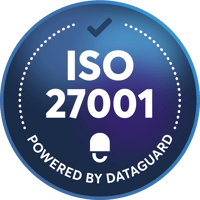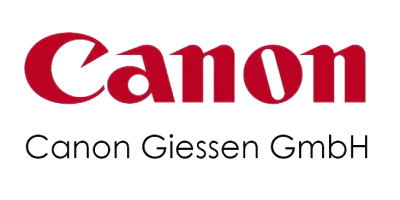Overview: ISO 27001 requirement 10.1
ISO 27001 is the international standard for information security management systems (ISMS). It provides a framework for organisations of all sizes to manage their information security risks and protect their assets.
Continual improvement is a key requirement of ISO 27001. It means that organisations must be constantly striving to improve their ISMS and make it more effective.
This article provides a comprehensive guide to continual improvement in ISO 27001. It covers the following topics:
- What is continual improvement?
- Why is continual improvement important in ISO 27001?
- How to implement continual improvement in ISO 27001
- Common challenges to continual improvement in ISO 27001
- Best practices for continual improvement in ISO 27001
What is the ISO 27001 continual improvement policy?
The ISO 27001 continual improvement policy is a statement of the organisation’s commitment to improving its information security management system (ISMS) on an ongoing basis. The policy should describe the organisation’s approach to continual improvement, including the following elements:
- The process for identifying opportunities for improvement
- The process for implementing improvements
- The process for monitoring and measuring the effectiveness of improvements
- The roles and responsibilities of personnel involved in continual improvement
Get ISO 27001 certified in as little as 3 months
Save yourself budget, time, and effort while building an ISMS with our easy-to-use platform. Get ready for the ISO 27001:2022 audit with up to 75% less workload.

Here is an example of a simple ISO 27001 continual improvement policy:
Purpose
This policy sets out the Company's commitment to continually improving its information security management system.
Scope
This policy applies to all personnel and all aspects of the ISMS.
Policy
The Company is committed to continually improving the effectiveness of its ISMS. This will be achieved by:
- Identifying opportunities for improvement through regular reviews of the ISMS, internal audits , and feedback from staff and customers.
- Implementing corrective and preventive actions to address identified opportunities for improvement.
- Monitoring and measuring the effectiveness of implemented improvements.
Roles and Responsibilities
The Chief Information Security Officer (CISO) is usually responsible for the overall implementation and maintenance of this policy.
All personnel are responsible for identifying and reporting opportunities for improvement and for implementing and supporting approved improvements.
Communication
This policy will be communicated to all personnel through the company's intranet and through regular training and awareness sessions.
Review
This policy will be reviewed annually to ensure that it remains effective and aligned with the company's overall business objectives.
This is just an example, and the specific content of the ISO 27001 continual improvement policy will vary depending on the size and complexity of the organisation. However, all policies should be tailored to the specific needs of the organisation and should be communicated to all personnel.
Continual improvement is a process of continuous striving for improvement. It is based on the belief that there is always room for improvement, no matter how good things are.
Why is continual improvement important in ISO 27001?
Continual improvement is important in ISO 27001 because it helps organisations to:
- Reduce their information security risks
- Protect their assets
- Comply with ISO 27001
- Maintain their ISO 27001 certification
How to implement continual improvement in ISO 27001
There are a number of steps that organisations can take to implement continual improvement in ISO 27001. These include:
- Establish a culture of continual improvement: This means that everyone in the organisation must be committed to continuous improvement.
- Set goals and objectives: Organisations need to set specific, measurable, achievable, relevant, and time-bound goals and objectives for their ISMS.
- Identify opportunities for improvement: Organisations need to regularly review their ISMS to identify opportunities for improvement. This can be done through internal audits, management reviews, and feedback from staff and customers.
- Implement improvements: Once opportunities for improvement have been identified, organisations need to implement corrective and preventive actions.
- Monitor and measure progress: Organisations need to monitor and measure their progress towards their goals and objectives. This will help them to identify what is working well and what needs to be improved.
Common challenges to continual improvement in ISO 27001
Some of the common challenges to continual improvement in ISO 27001 include:
- Lack of resources. Continual improvement requires resources, such as time, money, and staff.
- Lack of commitment. Continual improvement is a long-term process and it requires commitment from everyone in the organisation.
- Lack of knowledge and expertise. Continual improvement can be complex and organisations need to have the knowledge and expertise to implement it effectively.
Our user-friendly web-based platform automates manual tasks while our in-house experts guide you every step of the way. Reduce the manual work required to stay compliant by at least 40%
Your ISO 27001 certification process
made simple

Best practices for continual improvement in ISO 27001
Here are some best practices for continual improvement in ISO 27001:
- Involve everyone: Continual improvement is everyone's responsibility. Involve staff at all levels of the organisation in the process.
- Make it a priority: Continual improvement should be a priority for the organisation. Set aside time and resources for it.
- Use a risk-based approach: Focus your continual improvement efforts on the areas of your ISMS that pose the greatest risks.
- Use data and evidence to make decisions: Don't make changes to your ISMS based on gut instinct. Use data and evidence to make informed decisions.
- Celebrate your successes: It's important to celebrate your successes, no matter how small. This will help to keep everyone motivated.
Conclusion
Continual improvement is an essential part of ISO 27001. By following the best practices in this article, organisations can implement continual improvement effectively and improve their ISMS.
up to 50%
Cheaper than external consultants
up to 300%
Increase your opt-in rate with Consent & Preference Management
3 months
Get audit-ready in as little as three months
100%
First-try pass rate in external audits on ISO 27001 and TISAX®
Saves up to 100 hours
of manual work to get ISO 27001 certified or TISAX® labels
Customers trust us
P I C
PRIVACY
External DPO
Audit and risk analysis
Data Subject Requests
Online training courses
Cookie & Preference manager
Business advice from experts
INFOSEC
Prepare for ISO 27001
Build an ISMS
Cyber security
Asset management
Risk mitigation
Internal audit
COMPLIANCE
Digital whistleblowing system
Whistleblowing support
Compliance audit
Risk mitigation
Online training courses
Templates
ISO 27001:2022 requirements
Trusted and used by companies





TISAX® is a registered trademark of the ENX Association. DataGuard is not affiliated with the ENX Association. We provide consultation and support for the assessment on TISAX® only. The ENX Association does not take any responsibility for any content shown on DataGuard's website.
All data provided is for information only, based on internal estimates. This information is not indicative of KPIs, and is not given with any warranties or guarantees, expressly stated or implied in relation to accuracy and reliability.


